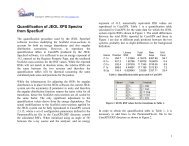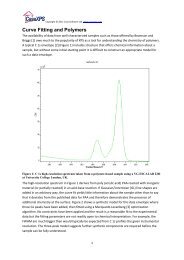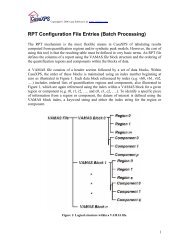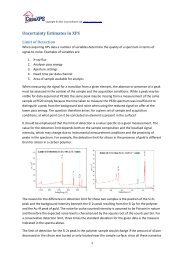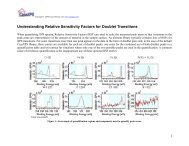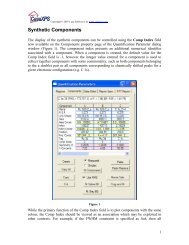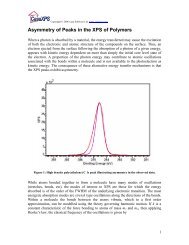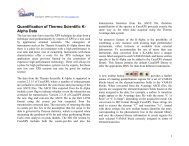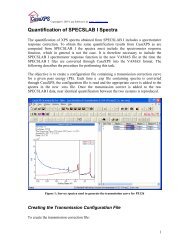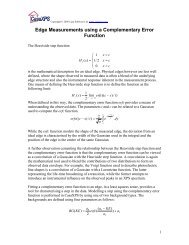Dynamic SIMS - CasaXPS
Dynamic SIMS - CasaXPS
Dynamic SIMS - CasaXPS
You also want an ePaper? Increase the reach of your titles
YUMPU automatically turns print PDFs into web optimized ePapers that Google loves.
<strong>CasaXPS</strong> Manual 2.3.15 Rev 1.0<br />
Copyright © 2010 Casa Software Ltd<br />
difference between these two operations is that, when recalibrating a massbinned<br />
spectrum, the functional form used to assign the data bins to mass<br />
values must involve a general three parameter quadratic function rather than<br />
the stiffer model used to calibrate time-bins to mass-bins. The two parameter<br />
calibration function recommended for time-to-mass calibration is too specific<br />
to the counting mechanism used to acquire the ToF MS data. The extra<br />
flexibility offered by the three parameter quadratic is needed to model the<br />
errors in the original time-to-mass calibration; the stiffer two-parameter<br />
quadratic model used for time-to-mass calibration is dictated by and<br />
appropriate to the physics of the ToF instrument.<br />
While <strong>CasaXPS</strong> allows time-to-mass calibration using both the recommended<br />
two-parameter quadratic model and the general three-parameter quadratic<br />
function, the same warning about the three-parameter functional form is<br />
equally applicable to both situations. That is, the flexibility offered by the<br />
general quadratic function allows non-physical solutions for the mass<br />
assignment of peaks. It is possible to create a mass calibration when using<br />
the three-parameter quadratic for which known peaks are apparently<br />
correctly assigned to masses, yet other peaks in the spectrum are incorrectly<br />
assigned. Extrapolation based on the three parameter model should be<br />
viewed with suspicion. Ideally, ToF MS data should be provided in the time<br />
domain, nevertheless situations do occur where mass-binned data must be<br />
managed and therefore <strong>CasaXPS</strong> provides a mean of recalibrating the massbinned<br />
data. Figure 13 shows the same data seen in Figure 12 following the<br />
recalibration procedure described below.<br />
Figure 13: The same mass spectrum after recalibration.<br />
16




